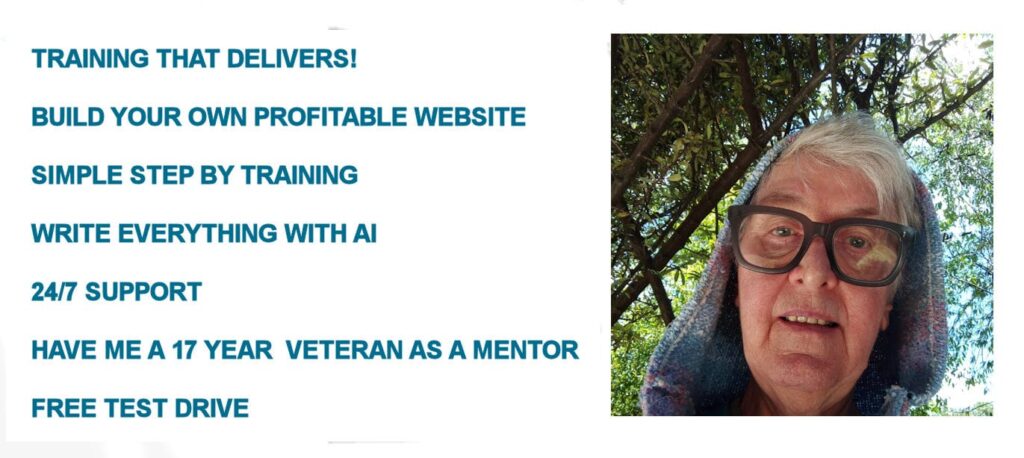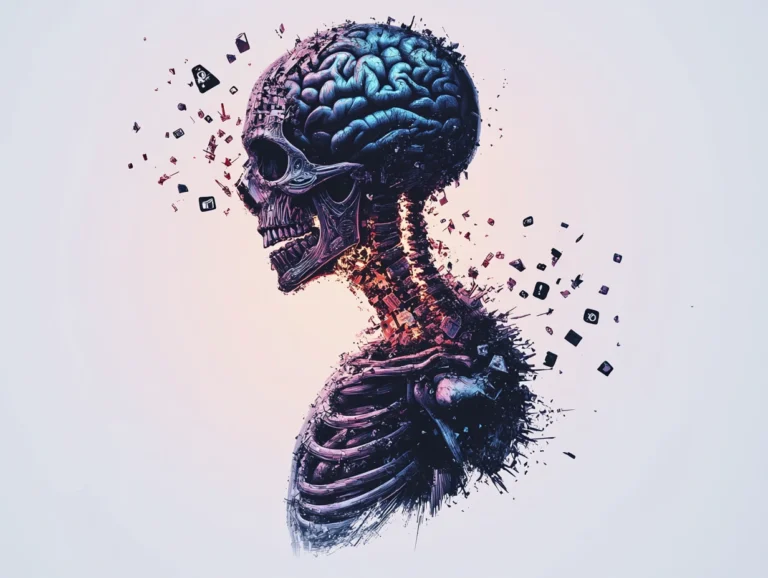How To Use AI TO Create Compelling Media Content
I’m fascinated by the seamless integration of AI into the content creation process. It has revolutionized how my media content is produced. There is such a range of tools that amplify both my creativity and efficiency. But what exactly is AI in the context of media? It’s the use of machine intelligence to handle tasks like data analysis, pattern recognition, and even the generation of text, images, or music, often performing these at a scale or speed challenging for humans.Utilizing AI brings a host of advantages: speed, consistency, and the ability to tackle vast amounts of data. However, the key to success lies in the synergy between these digital tools and the irreplaceable touch of human creativity. It’s about knowing when to let AI take the reins and when to step in to finesse and personalize. Now let’s explore how To use AI to create compelling media content.
Understanding Your Content Goals
Knowing your audience is the cornerstone of effective content creation. Before you let AI tools take the wheel, you need a map to guide the journey. Start by identifying who will consume your media. Are they professionals in a specific field, enthusiastic hobbyists, or the general public? Once you pinpoint the demographic, dissect their interests, pain points, and consumption patterns.
So let’s use this website an example Digital nomadess, it is a website aimed at women who want to become digital nomads. The target audience are those people who want to travel and work at the same time. Some of them may well be professional copywriters for example, but the articles are about acquiring the skills needed to be a digital nomad. So their interest is working remotely. The pain points are several they include, but are not limited to financial stability and security, juggling a full time job and the logistics of traveling. Developing their skill sets. Acquiring the necessary skills to work remotely and stay competitive in their field can be a hurdle, especially for those transitioning from traditional office jobs.Finally adjusting to self employment, especially if they have come from a corporate world.
So Now You Know Whom You are talking to, What is the Objective of your Content?
After establishing who you’re addressing, clarify what you want to achieve. Are you looking to educate, entertain, or persuade? Your content goals could range from driving website traffic and generating leads to establishing thought leadership or simply engaging a community.
The type of content you produce should sync with both your audience’s preferences and your objectives. If your audience leans towards informative podcasts, AI can help script and edit your audio. For visual learners, AI-generated infographics or video content might be more appropriate.
Set realistic expectations. Remember, AI can significantly streamline and refine the content creation process, but it’s not a silver bullet. The most effective media emerges from a partnership between AI’s efficiency and your unique human touch.
Selecting the Right AI Tools for Your Needs
When it comes to content creation, the vast array of AI tools available can be overwhelming. Your mission is to find the tools that not only streamline your creative process but also complement your unique style and objectives. Any creator would benefit from a tech stack tailored to their needs, so let’s get to the heart of the matter.
Firstly, it’s critical to survey the landscape of AI content creation tools. There’s a sea of options, from writing assistants and image generators to video editing algorithms. Each comes with its strengths and peculiarities and my advice is to focus on those that align with the type of content you’re producing.
Budget is a non-negotiable factor in selecting AI tools. Prepare to weigh the costs against the potential return on investment. Some AI resources offer tiered pricing, while others are subscription-based or require a one-time payment. Be sure these costs fit into your operating budget.
Before you fully commit to any tool, I recommend trialing them. Many AI platforms offer demos or limited-time trials. Use this opportunity to gauge compatibility with your workflow, the quality of output, and the learning curve involved. And during this phase, keep a close eye on how much manual intervention is required to refine the AI-generated content to meet your standards.
Remember, the goal is to select AI tools that augment your capabilities without dictating your content’s direction. Once you’ve locked in the tools that best suit your needs, you’re ready for the next vital step: seamless integration into your creative process, which we’ll explore in the following section.
Integrating AI with the Creative Process
The union of artificial intelligence and human ingenuity is nothing short of revolutionary. When you use AI in your content creation, you’re not just employing a tool; you’re establishing a partnership. This synergy has the power to enhance your creativity and efficiency, but like any collaboration, it requires a thoughtful approach. Let me walk you through how to weave AI into the fabric of your creative process.

My Favorite Way of Generating written content.
First of all I use ClaudeAI. Lets say I want to give away a free ebook on creating a profitable website within Wealthy Affiliate to include reviews of say camping products. There are several reasons for this ebook.
Building My List
To begin, map out your content workflow and identify where AI can best serve you. Early in the creative process, AI can aid with brainstorming and ideation, offering prompts or suggestions based on trends and data analysis. In content development, AI can assist in drafting text, generating visual elements, or composing background music for videos. Use AI to take care of repetitive tasks, freeing up your time for more complex, creative work. Throughout all stages, be vigilant to ensure that the voice and style remain uniquely yours.
I use Claude AI to generate an article outline. I do a fairly long prompt, giving the objective of the ebook, the target aidience, the length of the ebook
Over-reliance on AI can be a pitfall. The goal is not to replace human creativity but to augment it. Don’t let AI dictate your content’s direction; rather, use it as a means to explore new avenues and enhance your vision. Think of AI as a sophisticated brush in the hands of an artist—you are ultimately the one guiding the strokes.
Involving AI should not dilute your brand’s voice or your personal touch. As you integrate AI into your content creation, perform regular checks to confirm that your outputs align with your brand’s values and maintain the human touch that resonates with your audience.
Coming up next, I’ll share some practical tips and tricks to optimize your content using AI. From leveraging AI for insightful data analysis to boosting the quality of your media with editing tools, you’ll discover how these technological advances can take your content to the next level.
Optimizing Content with AI: Tips and Tricks.
When I use AI to optimize content, I always begin by tapping into AI’s capability for data analysis. Analyzing large sets of audience data helps me understand what resonates with readers. For instance, AI tools can pinpoint trending topics, preferred content types, and even optimal posting times.
1. Optimizing Content.
Before you start optimizing your content, it’s important to first leverage AI’s powerful data analysis capabilities. By analyzing large sets of audience data, you can gain valuable insights into what resonates best with your readers. AI tools can help you identify trending topics, understand which content types perform best, and even determine the optimal times to publish your posts.
Some of the top AI-powered tools for this type of data analysis include Google Analytics, Semrush, Ahrefs, and BuzzSumo. These platforms use advanced algorithms to dive deep into your audience’s behavior and preferences. For example, you can use them to uncover the most popular keywords, track content engagement metrics, and see what content is being shared the most on social media.
With these data-driven insights, you can then make informed decisions about the topics, formats, and timing of your content to maximize its effectiveness. The key is to let the data guide your content strategy, rather than relying solely on guesswork or assumptions. By tapping into AI’s analytical capabilities upfront, you’ll be able to create content that truly resonates with your target audience.
2. Audience targeting capabilities
Outbrain
offers a robust set of targeting options to help you deliver personalized content recommendations. This includes demographic targeting factors like age, gender, income, and education level. You can also leverage behavioral targeting, such as tracking content engagement, device type, and purchase intent. Furthermore, Outbrain allows for contextual targeting based on keywords, topics, and specific site sections. An additional capability is the ability to create lookalike audiences, which helps you find new users that are similar to your best-performing segments.
Taboola
Provides several advanced targeting features as well. On the behavioral side, you can target users based on their past content interactions, browsing history, and search queries. The demographic targeting options include location, age, gender, interests, and income level. Taboola also enables contextual targeting around keywords, content categories, and site sections. Additionally, you can use Taboola’s retargeting capabilities to reach users who have previously interacted with your content.
When it comes to personalizing my content, I rely heavily on the insights provided by AI data analysis tools. These tools help me understand my audience’s preferences, behaviors, and interests at a granular level. By leveraging this information, I can tailor my content to speak directly to each individual reader, making their experience more engaging and memorable.
One way I personalize content is through customized newsletters. Using tools like Mailchimp or Constant Contact, I can segment my email list based on subscriber preferences, past interactions, and demographic data. This allows me to send targeted content that aligns with each group’s interests. For instance, if a segment of my list has shown a strong interest in a particular product category, I can create a newsletter featuring related products, tips, or articles specifically for them.
Product recommendations are another area where I use AI to personalize the user experience. Platforms like Amazon Personalize and Dynamic Yield analyze a visitor’s browsing history, purchase behavior, and other data points to generate hyper-relevant product suggestions. By implementing these tools on my website, I can present each visitor with products they are most likely to be interested in, increasing the chances of conversion and customer satisfaction.
I also use AI to personalize the content of my articles and blog posts. Tools like OneSpot and Personyze enable me to display different content blocks, images, or calls-to-action based on a reader’s profile. For example, if a reader has previously engaged with content related to a specific topic, I can use these tools to highlight more articles in that category, encouraging them to dive deeper into the subject matter.
Ultimately, the key to successful content personalization is striking the right balance between AI-driven automation and human intuition. While AI tools provide invaluable insights and efficiency, it’s up to me to interpret the data and create meaningful, authentic connections with my audience. By combining the power of AI with my own creativity and empathy, I can deliver content experiences that truly resonate on a personal level.
Personalization is next on my list. I ensure content speaks directly to my audience’s preferences and behaviors, which AI data analysis tools can identify. This could involve tailoring newsletters, suggesting products, or customizing article recommendations.
Keeping ahead requires staying informed about AI updates that offer new features or improve old ones. Technologies evolve swiftly, and what worked yesterday might not be the best option today. I ensure I regularly review the AI tools I rely on.
Now, while AI can significantly lift the quality of your content, it’s essential to approach its use with a clear set of ethical guidelines. You must ensure your intended message isn’t lost in the optimization process and that your content remains true to your brand’s voice and values. Compelling originality should still be the cornerstone of your work.
Let’s Not Forget Proofreading and Beyond
AI-powered editing tools have become incredibly sophisticated and can elevate the quality and consistency of content in significant ways beyond just basic grammar and spell-checking. Let me expand on this in more detail:
Beyond the foundational spell-check and grammar correction capabilities, modern AI writing assistants have evolved to provide much more comprehensive editing support. Tools powered by natural language processing (NLP) and machine learning can now assess the overall readability and flow of your content. They analyze factors like sentence structure, word choice, tone, and even the reading level to suggest revisions that improve clarity and accessibility.

For example, tools like Grammarly, ProWritingAid, and Hemingway Editor go well beyond just flagging misspellings or grammatical errors. They can identify opportunities to tighten up wordiness, vary sentence length, and optimize vocabulary to align with your target audience. Some even provide suggestions to enhance word choice for better concision, vividness, or emotional impact.
Moreover, AI-powered editing assistants can help maintain consistent language, tone, and style across all of your content – whether it’s website copy, blog posts, marketing materials, or even lengthy documents. By applying custom style guides and brand voice parameters, these tools ensure seamless quality and brand alignment, saving content creators and editors significant time and effort.
The benefits of integrating AI-powered editing into your content workflow are substantial. It allows subject matter experts to focus on the substance of their writing, while the AI takes care of the nitty-gritty refinements that elevate the final product. This collaborative human-AI approach results in more polished, engaging, and brand-consistent content – delivered far more efficiently than manual editing alone.
Ethical Considerations in AI-Generated Content
As creators turn to AI to enhance media content, it’s crucial we navigate this new territory with a moral compass. AI has the potential to revolutionize how we produce and consume media, but with great power comes great responsibility. It’s my duty to guide you through the ethical implications of using AI in content creation.
Originality is at the heart of creativity. AI, by design, can mimic and replicate patterns it has learned from existing data. This sparks a conversation about the originality of AI-generated content. A fine line separates inspiration from imitation, and it’s our job to ensure that AI recommendations and creations don’t cross into the realm of plagiarism. Cue strategies for keeping AI in check and preserving the novelty of your content.
Copyright and intellectual property are critical in the creative world. With AI-derived content, there’s a risk of unintended copyright infringement. I will outline how to navigate these murky waters, ensuring creations remain within legal boundaries and respecting the hard work of original creators.
Transparency is also paramount. Viewers, readers, or listeners should be able to identify which parts of content AI developed. By being open about the use of AI, we build trust with our audience and maintain integrity in our work.
To address these ethical challenges, you’ll need a set of best practices for using AI. This includes keeping abreast of laws and regulations, applying proper attributions, and fostering an AI-assisted rather than AI-driven creation process. Doing so not only aligns with ethical standards but also distinguishes the content as genuinely yours.
As we wrap up the discussion on ethics, we transition into how these practices intersect with SEO. The ‘SEO Best Practices for AI-Enhanced Content’ section will illustrate how ethical considerations can influence and improve your content’s visibility and ranking online. Get ready to inject integrity directly into the bloodstream of your SEO strategy.
SEO Best Practices for AI-Enhanced Content
One of the many strengths of AI in content creation is its ability to refine SEO strategies. It’s critical for your content to be discovered by the right audience, and AI can be instrumental in achieving this. How to use AI to create compelling media content
A good starting point is to use AI to conduct thorough keyword research. By analyzing vast amounts of data, AI can pinpoint exactly what your target audience is searching for. This ensures that the keywords you use are highly relevant, which can improve your content’s search ranking.
Additionally, AI tools are adept at suggesting synonyms and related phrases that can make your content more comprehensive and SEO-friendly. But remember, stuffing your content with keywords could backfire. It’s about striking a balance, and that’s something I’ll always emphasize.
You might be wondering about readability and user engagement. A content piece is only successful if it captively holds a reader’s attention. AI can predict how changes in your content may affect engagement by simulating reader interactions, which then allows you to make data-driven decisions.
Let’s not forget about the smaller elements that contribute to SEO. AI can generate meta descriptions, alt tags for images, and even suggest improvements for your content’s structure. These elements are essential for improving visibility and click-through rates.
I do want you to understand the boundaries of AI. Human touch remains indispensable, especially when it comes to engaging and retaining your audience. AI should complement your efforts, not replace the nuances that only a human can provide.
Measuring the Impact of AI on Content Performance
When I incorporate AI into my content creation process, it’s crucial not to set it and forget it. Just like any tool, AI’s effectiveness depends on how I use it. That’s why it is essential to measure the impact AI has on content performance. Regularly checking how audiences respond to AI-enhanced content can provide insights that help sharpen my media strategy.
One of my first steps is to monitor content engagement. I look at metrics such as page views, time spent on site, and social shares. These give me a clear picture of how well my content resonates with my audience. If I’m using AI to generate articles, for instance, I’ll be alert to how readers interact with them compared to my human-written pieces.
Next, I tap into AI itself to analyze content success. Many AI tools offer analysis features that can track user behavior and suggest content modifications. They can identify patterns and preferences I might miss. I use these insights to adjust my content for better performance. Perhaps, AI could reveal that my audience prefers video content over text, prompting me to adjust my focus accordingly.
A/B testing plays a crucial role in AI content strategies. By comparing versions of AI-generated content, with and without certain tweaks, I can see what works best. These tests can be about anything from headline effectiveness to image placement. The goal is to make data-driven improvements that enhance user experience and engagement.
Adapting and evolving my content based on performance data keeps my media fresh and relevant. For instance, if AI-driven analytics show that my audience’s interests are changing, I can quickly pivot my content to match these new trends. The agility that AI-based tools provide can be a game-changer in staying ahead in the dynamic field of content creation.
Embracing the Future: Staying Ahead in the AI-Driven Media Landscape
The potential offered by artificial intelligence in media content creation is substantial and ever-expanding. As we’ve explored, integrating AI can streamline workflows, enhance creativity, and ensure that content meets the highest standards of personalization and relevancy for audiences. How To Use AI to create compelling media content is a no brainer.
Innovation in AI is relentless; with every passing day, we’re witnessing more sophisticated tools and technologies emerge. Staying current with these advancements is crucial for anyone keen on maintaining a competitive edge in the world of content creation.
Continuous education is a critical part of leveraging AI effectively. This means regularly attending webinars, participating in forums, and reading up on the latest research. Building a network with other content creators can also provide valuable insights into how AI is shaping the industry.
As we integrate AI into our content creation processes, we must also adapt our strategies and continually develop new skills. This includes not only technical expertise but also a deep understanding of our audiences and the ethical considerations that come with AI-generated content.
The fusion of AI and human creativity promises a rich landscape of media content that is more engaging, diverse, and targeted than ever before. Balance is key—while AI provides the tools, it is our human insight, empathy, and creativity that will make the content resonate deeply with our audiences.
In Conclusion how To use AI to create compelling media content.
AI in media content creation is not just a trend; it’s a transformative force reshaping the way we think about and produce content. By embracing the technology with a strategic, ethical, and informed approach, we are not only optimizing for the present but also preparing ourselves for the exciting developments the future holds. How To use AI to create compelling media content is a skill. You may not lose your business to Ai in you fail to use this skill, but for sure you will lose it to someone who has mastered this skill.






